May 30, 2025 | 18:20 GMT +7
May 30, 2025 | 18:20 GMT +7
Hotline: 0913.378.918
May 30, 2025 | 18:20 GMT +7
Hotline: 0913.378.918
According to forecasts, from March to May 2024, there will be very little rain in Ninh Thuan. The water level of rivers and streams in the area has little change; the common flow volume is lower to approximately the average of many years.

Song Bieu Lake, with a design capacity of 23.8 million m3 of water, now only stores 1.7 million m3, unable to supply irrigation water for the summer-autumn crop. Photo: PC.
Mr. Le Pham Hoa Binh, Director of Ninh Thuan Irrigation Management Company Limited, said that the unit currently manages 23 irrigation lakes with a total design capacity of 417.7 million m3 of water. However, due to last year’s short rainy season, as of now, the remaining water in reservoirs is 201 million m3. Of which, Song Cai Lake, with a capacity of 219.8 million m3, now stores 101 million m3.
In addition, Don Duong hydroelectric lake (Lam Dong province), generating electricity through the Da Nhim Hydroelectric Plant and providing domestic and irrigation water for Ninh Thuan province through the Da Nhim-Lam Cam irrigation system, has a capacity of 165 million m3 of water, but now only 114 million m3 remains.
Mr. Dang Kim Cuong, Director of the Ninh Thuan Department of Agriculture and Rural Development, said that based on the current amount of water in reservoirs, if there is no rain in the coming time, the environment, people's lives, and socio-economic activities in the area will be affected. The risk of drought and local water shortages is visible, especially in places outside the water supply area of irrigation structures. Localities with a risk of drought and water shortages include Ninh Son, Bac Ai, Ninh Hai, Thuan Bac, and Thuan Nam districts.
Meanwhile, according to the plan, in the 2024 summer-autumn crop, Ninh Thuan will supply about 11.34 million m3 of domestic water to people, including 9.47 million m3 from the Da Chim Hydroelectric Plant and 1.45 million m3 from reservoirs in the province. Supply 1.88 million m3 of drinking water for cattle and poultry in the entire province and 2.51 million m3 of water for services, tourism, and industry. In addition, the province also has to provide irrigation water for livestock farming and agricultural production in the summer-autumn crop.
In the winter-spring crop of 2023–2024, after providing water for farmers to sow seeds, some reservoirs have receded to the dead water level, such as CK7, Bau Ngu, and Ong Kinh. Besides, in some reservoirs, such as Phuoc Nhon, Tan Giang, Suoi Lon, Song Bieu, Lanh Ra, and Bau Zon, the amount of water stored in the reservoir is likely to lower to the dead water level after the winter-spring crop ends.
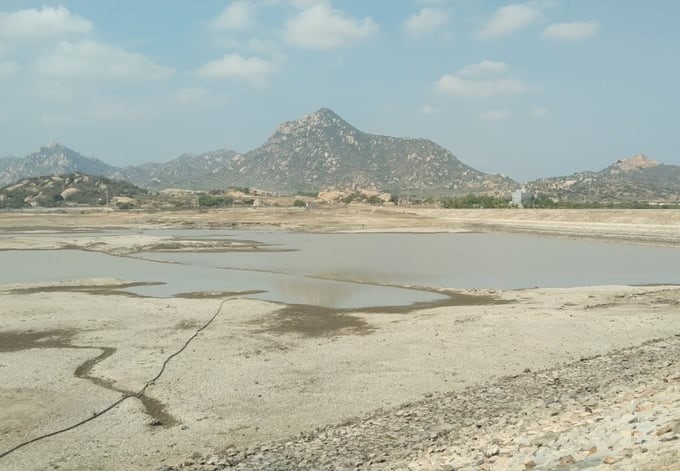
CK 7 Reservoir in Thuan Nam district has run out of water. Photo: PC.
Based on the actual situation, the Ninh Thuan Department of Agriculture and Rural Development proposed two production plans within the service scope of the irrigation system. Option 1 is that the production area is 24,100 ha (13,063 ha of rice; 7,988 ha of crops; 2,622 ha of perennial crops; 425 ha of aquatic products). Option 2 is that the production area is 25,227 ha (13,966 ha of rice; 8,213 ha of crops; 2622 ha of perennial crops; 425 ha of aquatic products).
"Faced with the above situation, the agriculture sector is focusing on guiding farmers to organize planting according to the seasonal calendar and rice variety structure issued by the Ninh Thuan Department of Agriculture and Rural Development. At the same time, take timely preventive measures to prevent spontaneous and unplanned planting from occurring," said Mr. Dang Kim Cuong.
The most worrying problem in Ninh Thuan today is domestic water for people. If there is no rain in the province in the coming time, some areas will lack domestic water. The Ninh Thuan Department of Agriculture and Rural Development directed the Center for Clean Water and Rural Environmental Sanitation to develop a plan for supplying water to each plant and interconnecting water supplies between plants.
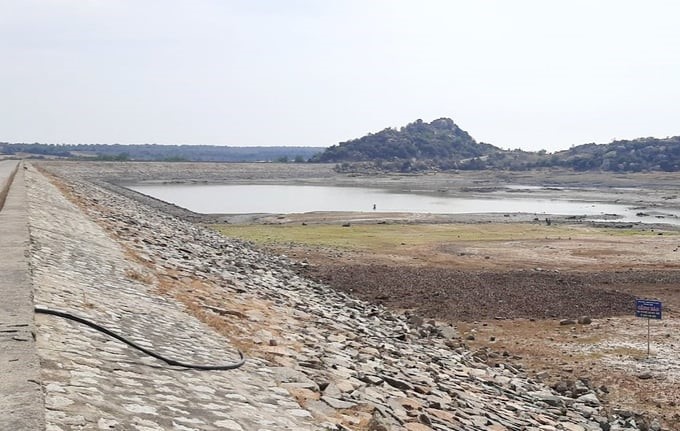
Bau Ngu Lake has receded to the dead water level. Photo: PC.
The Ninh Thuan Department of Agriculture and Rural Development has directed the Center for Clean Water and Rural Environmental Sanitation to fully prepare materials, chemicals, and human resources to immediately fix problems (if any). Regularly organize periodic maintenance of pump equipment; reserve a number of additional pumps at stations to increase capacity and pump water in lakes below the dead water level. Focus on maintaining the South and North canal raw water plants; coordinate with localities to disseminate and encourage people to install water meters in their homes, use water economically, and prioritize the use of water for daily life. Connect centralized water supply works to support raw and clean water when necessary.
Actively develop a plan to transport water to serve the people of Tap La village, Phuoc Chien commune (Thuan Bac district), Cau Gay and Vinh Hy villages, Vinh Hai commune (Ninh Hai district), Ma Noi commune (Ninh Son district), and Phuoc Binh commune (Bac Ai district), because if there is no rain in the second and third quarters of 2024, the above areas are likely to lack domestic water.
The province's agriculture sector is also coordinating with localities that frequently experience drought to count the number of cattle and poultry herds, especially horned cattle such as buffalo, cow, goat, and sheep. Disseminate and mobilize horned cattle-farming households to proactively store drinking water sources by digging ponds and lakes or drilling wells.
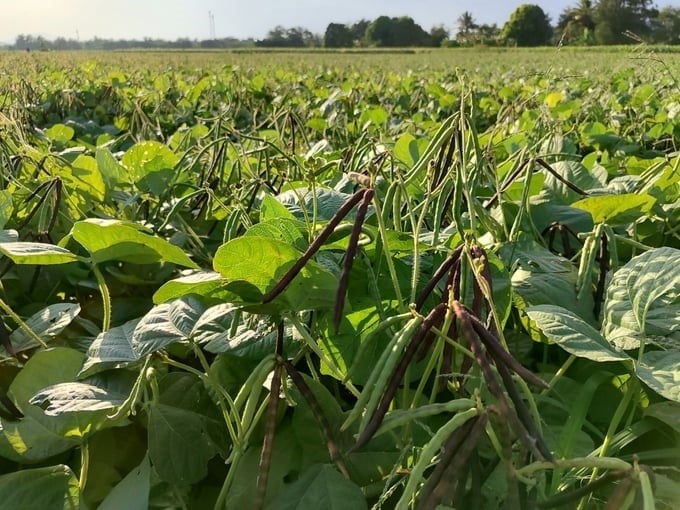
In the coming summer-autumn crop, Ninh Thuan will continue to strongly convert to dry crops that use less water in areas at risk of water shortages. Photo: PC.
At the same time, store, preserve, and process concentrate feed such as rice and corn bran and mixed feed to make food for cattle and minimize livestock deaths due to malnutrition caused by a lack of food and drinking water.
Mr. Nguyen Duc Thuan, Director of the Ninh Thuan Agricultural Extension Center, said: "Right from the beginning of the winter-spring crop, the agriculture sector has commented that there could be drought in the province in 2024, so the province has drastically directed the conversion of rice farming to other crops to save water. As a result, in the winter-spring crop, the whole province converted over 900 hectares. As for the summer-autumn crop, right in March, the Agricultural Extension Center sent officials to the localities to grasp the conversion situation. According to the data, as of now, localities have registered to convert more than 600 hectares. Converting rice land to short-term crops such as vegetables, beans, and peas not only saves water resources but also brings more economic efficiency than rice production."
Translated by Huyen Vu Thu
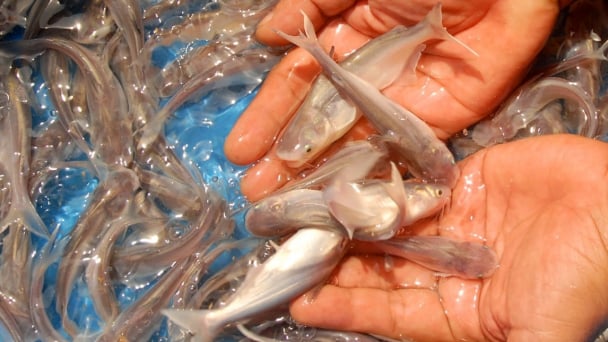
(VAN) Vaccinating juvenile pangasius helps reduce disease, antibiotic use, and farming costs, increasing profits for export-oriented farmers in An Giang.

(VAN) Due to a limited supply of workforce and competitive recruitment requirements, businesses struggle to retain talented veterinary human resources.
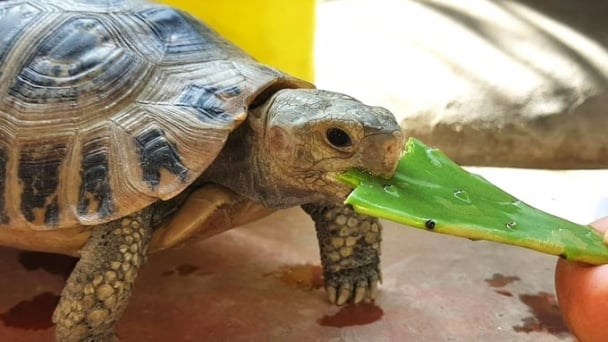
(VAN) WOAH’s guidance aims to mitigate disease risks through a One Health approach that balances economic, conservation, and public health interests.

(VAN) Ms. Nguyen Thi Dung, Deputy Director of Ngoc Hoang Cooperative, shared about the journey of bringing dragon fruit to Europe, achieving annual revenues in the billions of VND.

(VAN) Bamboo products from Thang Tho Bamboo Cooperative have reached many countries around the world, while also creating jobs for local workers.
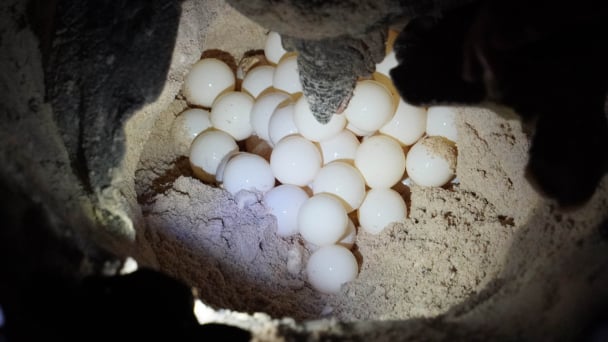
(VAN) The Management Board of Con Dao National Park reported that a green sea turtle, tagged in the Philippines, has traveled thousands of kilometers to lay 84 eggs on Bay Canh Islet.
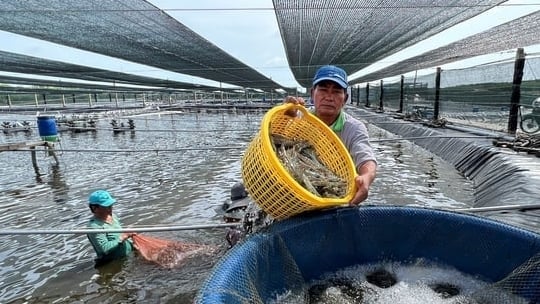
(VAN) Green technology is paving a new path for sustainable aquaculture in the Mekong Delta in particular and across the country in general, helping reduce emissions and adapt to climate change.